Gene Fish's Blog, page 3
April 15, 2018
Where Do Flight Engineers Go?
A comprehensive guide to achieving your flight engineer degree
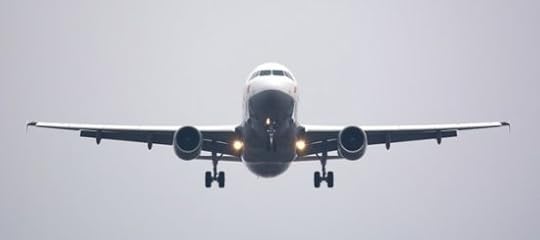
Flight engineers ensure a plane’s engine and all mechanical systems are working properly. Apart from carrying out repairs in case of mechanical issues, they also help pilots with navigation, along with interpreting complex instruments and gauges related to the flight. With technological advancements and the rise of automated programs aiding flight, which can perform many of these duties at a reduced cost, the number of flight engineer jobs has dwindled.
However, this doesn’t mean those interested in applying for flight engineer schools should feel disheartened. Larger aircraft and military aircraft still need flight engineers since the technology under which these aircraft operate is different from commercial airlines and run a higher risk of encountering mechanical problems or attacks. Depending on their qualification and experience, flight engineers can also become pilots or copilots, provided they get the relevant licenses and flight time needed for such positions.
Becoming a flight engineer
The minimum educational requirement is two years of college, though college graduates are usually preferred by a majority of airlines when they fill vacancies. This means getting a bachelor’s degree in aircraft or aeronautical or mechanical engineering would improve your chances of being hired.
Majoring in aeronautical or mechanical engineering during one’s undergraduate studies should include course completed in aerospace flight, space systems, electronic circuits, and laboratory and aerospace control, along with work modules that offer hands-on experience related to aircraft inspection, component and equipment replacement, condition monitoring, and systems fault identification and rectification. Such courses also offer the students some useful insight of the work environment and impart knowledge about legal requirements related to aircraft operations.
For those with mechanical engineering degrees, course modules should include engineering mechanics, thermodynamics, electromechanical systems, engineering analysis, and renewable energy systems, among others.
When you have these bases covered, you probably should have to be enrolled in pilot training programs offered by certain institutions and private flight schools approved by your country’s relevant authorities (like the Federal Aviation Administration in the USA). These programs usually include ground school and simulator instruction.
Becoming licensed
After completing two years of college, ideally completing a degree in either aeronautical or mechanical engineering, you need to get your flight engineer certificate by appearing for the flight engineer practical and knowledge test for which the individual must be at least 19 years old. However, holding a license needs one to be at least 21 years. Other crucial steps toward receiving your flight engineer degree include
being declared medically fit by a doctor designated or any relevant authority;
obtaining a commercial pilot’s license;
spending certain hours in the air (in the United States, it’s either 100 hours as a US Armed Forces flight engineer or 200 hours during flight training on a multiengine aircraft);
completing aircraft performance, flight theory, weather effects, and related examinations; and
passing in-flight evaluations that examine your ability to perform emergency and normal tasks.
What’s stopping you from getting your flight engineer degree? Ask tips from comments section below. Find me on Facebook, Twitter, and Goodreads for more updates. Also, you can read about aircrafts and the journey of a flight engineer in my book Ol’ Shakey: Memories of a Flight Engineer.
References
Learn.org. 2018. “How Can I Begin a Career in Flight Engineering?” Accessed March 23, 2018. https://learn.org/articles/How_Can_I_Begin_a_Career_in_Flight_Engineering.html.
CVTips.com. 2016. “Flight Engineer Training: How to Become a Flight Engineer.” Accessed March 23, 2018. http://www.cvtips.com/career-choice/flight-engineer-training-how-to-become-a-flight-engineer.html.
The post Where Do Flight Engineers Go? appeared first on Gene Fish.
March 25, 2018
Automation of Modern Airplanes
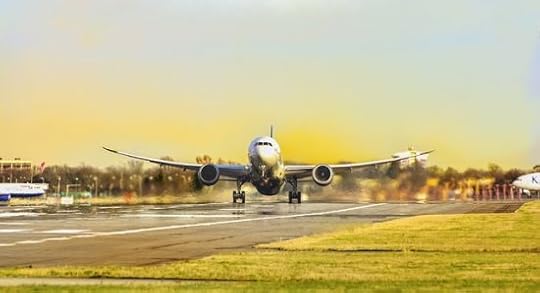
Automation of aircraft has been in the development process for decades. This trend continues, and the automation of modern airplanes was done for several reasons, but primarily because the industry and the flying public demanded something new, an improvement on what they had. This improvement trend extended to everything, not just to things aviation. Secondly, the accident rate was unacceptable, and some were attributed to pilot error in operation of various systems.
Let’s look at some early development.
Early aviation innovation can be traced back to 1933. The Boeing Company in Seattle, Washington developed the first modern transport the 247 which soon entered commercial operations with United Airlines. This airplane was constructed of all metal and included a cantilevered wing (A large beam within the wing, referred to as the main spar, runs through the wing from nearly wing tip to wing tip). Using a strong internal spar eliminates the need for external and internal bracing which reduces drag and increases speed. Also, the 247 had retractable main landing gear, another large reduction in drag while in flight. Other improvements included on the 247 were ailerons, rudder and elevators equipped with ace trim tabs, de-icing boots for the wings and tailplanes. To reduce pilot workload Boeing also included an autopilot. The engines were equipped with variable-pitch propellers which gave better takeoff performance as well as greater rates of climb and cruise speed.
The goal of Boeing was to build an airplane to cater to passenger comfort, speed, and reliability. It had an isolated partially soundproofed cabin to reduce engine noise, upholstered seats, and a built-in water heater.
Not to be outdone by Boeing, the Douglas Aircraft Corporation began development of their DC-1 which entered commercial service with Trans World Airlines. Although Boeing began the trend, Douglas designed and built a truly advanced airplane that included some automatic systems, improved wing flaps for flight at low airspeed, an autopilot, as well as retractable main landing gear, controllable pitch propellers and deicing boots. Even though the DC-1 was ahead of its time, it was not perfect.
Douglas continued innovation and development which resulted in the DC-2, then the DC-3 – the most successful airplane ever built.
World War II contributed a great deal to rapid innovation in aircraft design and utilization. Military needs dictated the development of bombers and fighters as well as transport and utility airplanes. Speed, rate of climb, and flight time endurance were improved. Perhaps, the greatest innovation for modern aviation during World War II were the jet engines and radar. Transponders were installed to identify friendly airplanes within range of the radar site, thus being able to separate friendly and enemy aircraft.
After many failures, the jet engine was finally succeeded in becoming operational in England and Germany. Fighter aircraft equipped with jet engines were able to fly higher and faster than aircraft equipped with conventional reciprocating engines and propellers. The disadvantage of the early jet engine – and it continues to today – is the high fuel consumption and limited radius of operations.
Along with the innovation of aviation engines and automation was the increase of the awareness toward safety. Following the crash of TWA Flight 599, an all wood Fokker tri motor airplane in March 31, 1931, that killed eight people, including the famous football coach of Notre Dame, Knute Rockne, the public began to fear riding aircraft. Government and airline companies worked together to encourage passengers to take to the sky, rather than take the railroad, by creating safe aircraft.
As so often happens following an increasing number of aviation accidents in the eighties, the blame was assumed to be human error. Some pointed to the lower skill of new pilots, some called the trend to increased complexity of airplanes which increased pilot workload and stress. Still others pointed to other factors, such as airline mismanagement and flight crew fatigue. A cry went out for more automation of modern airplanes as the solution which, if implemented, would minimize accidents due to human error.
One important feature of modern airplanes is installation of computers to measure, analyze the health of airplane systems, then transmit this information to flight and ground crews. A flight management system (FMS) collects data on several systems, such as engines, hydraulic, electrical, and fuel, and allows flight crews to monitor this information displayed on a single cathode ray tube resembling a small television screen.
As a part of the FMS is a flight management computer (FMC) used by pilots to enter their entire flight plans, including waypoints, speed and altitude. Information is then shown on the primary flight display (PFD) in the form of a moving map and digital readouts. The FMC, once again airborne, is connected to the autopilot which will then fly to the destination following the flight plan. More advanced FMC and AP systems will not only fly the airplane to the desired destination but will also fly an instrument approach to the runway, then land the airplane. The pilots primary job in this scenario is to monitor their instruments and take over if anything fails.
With the introduction of all this automation to modern airplanes the position of flight engineer, radio operator and navigator have been eliminated. Operations of the airplane are now in the hands of two individuals, the pilot and co-pilot. Flight is now safer than it has ever been, airlines are earning more, and passengers can now feel certain they will arrive at their destination safely.
Decision making processes in the flight deck, including a process called ‘Cockpit Resource Management’ or ‘Crew Resource Management’ (CRM) began creeping into the industry several years ago. Flight crews are thoroughly trained to use this process in their daily operations – and during emergencies. We will get into CRM in detail, but that will have to wait for a future article.
Want to learn more about modern aircrafts? You can read about aircrafts and the journey of a flight engineer in my book Ol’ Shakey: Memories of a Flight Engineer. For more updates, follow me on Facebook, Twitter, or Goodreads.
References
AvJobs. “History of Aviation—First Flights.” History. Accessed February 8, 2018. https://www.avjobs.com/history/index.asp.
Chialastri, Antonio. “Automation in Aviation.” Automation¸ edited by Florian Kongoli, 79–102. Rijeka: InTech, 2012. Accessed February 8, 2018. https://www.intechopen.com/books/automation/automation-in-aviation.
Dekker, Sydney. “When the airplane is more technically advanced than you.” Hindsight16 16, (2012): 8–10. Accessed February 8, 2018. https://www.eurocontrol.int/sites/default/files/publication/files/121218-hs16.pdf.
The post Automation of Modern Airplanes appeared first on Gene Fish.
March 18, 2018
Life at the Service Academies
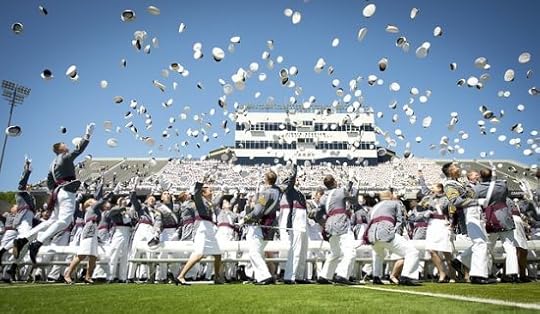
Pursuing a professional military education means sacrificing much of your personal freedom for nine years — you’ll spend four in the academy and five in the service. And in all probability, you will be deployed to conflict zones.
Every year hopefuls report for class at the United States Military Academy, the Naval Academy, the Air Force Academy, and the Coast Guard Academy. Additionally, several other institutions offer similar education experiences, including the Citadel in Virginia, Norwich in Vermont, and VMI in Virginia. But we will limit our discussion to the four established national service academies.
Many apply for the limited number of slots available, but few are chosen. The acceptance rate is typically less than twenty percent (20%). Upon reporting after acceptance, in exchange for their commitment to active military after graduation, the plebes, midshipmen and cadets receive a monthly stipend, tuition, rooms, books, and meals.
Competition is extremely tough, but once accepted and with hard work both academically and socially, the rewards of a military career are many. Preparation for the entrance competition should begin as early as possible in elementary, middle, and high school. Simply making good grades in what I refer to as “basket weaving,” those soft and easy to pass classes will not cut it. The applicant will want to have a well-rounded academic achievement, including mathematics and sciences as well as the humanities. Take as many advanced placement courses as you can because they will help when you begin your studies at the academy of your choice.
You should begin your application as early as your junior year in high school by collecting as much documentation as you can. This documentation includes transcripts of your academic work, letters from teachers and administrators in your school, church and community leaders. Also, begin writing an essay – it may never be read by anyone but YOU – outlining your goals and aspirations, and how you feel you would fit into a branch of the military as a career officer. And do not forget your state congressional Representative and both Senators. This may be a place where your essay may be the difference between acceptance and failure. Remember, each Representative and Senator may directly appoint an individual to the academies.
The military academies provide a balanced education in the arts and sciences., and cadets graduate with a Bachelor of Science degree that meets the intellectual needs of an officer. The physical program consists of physical education and competitive sports to keep the mental and physical fitness of an officer. Military skills are developed through active military training combined with classroom military science instruction. The moral-ethical growth is developed through the cadet’s experiences and activities while in the military academy.
Having said these things, it is important that you consider long and hard if the military is the life is for you. Following graduation from the academy you will enter activity duty as a second lieutenant which brings with it heavy responsibility to your country, your unit, your fellow officers – and especially the enlisted men assigned under you – and, above all else to yourself.
Let us hear your experiences in the army by filling out the comment section. You can get in touch with me via my Facebook, Twitter, and Goodreads accounts. You can also check my blog for more articles or read my book, Ol’ Shakey: Memories of a Flight Engineer, for more aviation stories.
References
Dao, James. “Survival of the Fittest.” The New York Times, July 24, 2010. Accessed January 23, 2018. http://www.nytimes.com/2010/07/25/education/edlife/25guidance-t.html.
Powers, Rod. “Is Military School the Perfect University?” The Balance. October 14, 2016. Accessed January 23, 2018. https://www.thebalance.com/the-perfect-university-3353968.
The post Life at the Service Academies appeared first on Gene Fish.
March 11, 2018
Joint Warfare in the Armed Forces
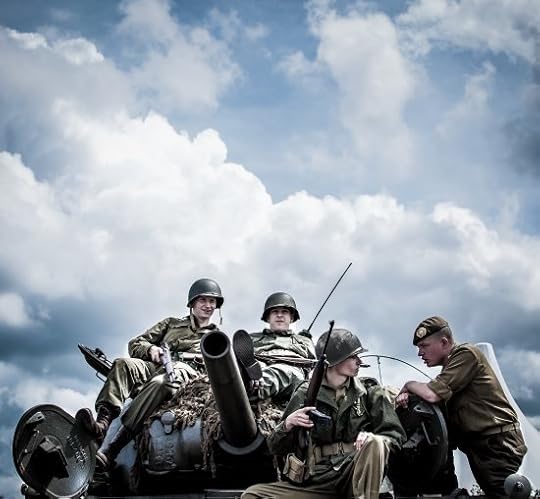
War is not an affair of chance. A great deal of knowledge, study, and meditation is necessary to conduct it well.
—Fredrick the Great
A nation’s military service is reflective of how powerful and influential a country is. International superpowers such as the United States, the United Kingdom, Germany, China, Russia, and France have the largest military forces. According to the Business Insider, the United States has the strongest military in the world, with several billion dollars allotted for the department of defense. In fact, if you are going to add the expenses of the other top nine countries with highest spending next to US, it still won’t amount to what the United States of America is investing on its military machinery. Yet, with the state of the countries of the world, it is clear this expense is necessary
The role of the armed forces of the United States is to protect and defend the Constitution and the nation from terrorism and international and national threats of various kinds. Aside from its obvious role when an armed conflict erupts, all of the various services, Army, Navy Air Force, Marine Corps and Coast Guard, assist during disasters in rescue operations and recovery, humanitarian relief, natural disaster relief, and law enforcement.
What Is Joint Operations?
A relatively recent doctrine within the military command structure is defined by the Modern War Institute as “the fundamental principles by which the military forces or elements thereof guide their actions in support of national objectives.” It is a body of thought that rules how armed forces operate, engage an enemy, and conduct conflict operations in the battle field.
Joint operations is a component of the Doctrine for the Armed Forces of the United States. It combines elements of the various military branches during specific special operations. The United States Department of Defense defines it as team warfare that “requires the integrated and synchronized application of all appropriate capabilities. The synergy that results maximizes combat capability in unified action.”
When the Army, Navy, Marine Corps and Air Force join forces to complete joined operations, resources and manpower are used efficiently.
Where Is the Joint Warfare Centre?
The Joint Warfare Centre (JWC) was established in 2003 in Stavanger, Norway as an establishment of NATO (North Atlantic Treaty Organization). It has twenty-nine-member countries, composed of European and North American states. The United States became a member in 1949, which is remarkable, considering that NATO is the first time US joined a peacetime military alliance outside of the Western hemisphere.
What Is NATO and How Is It Connected to the Joint Warfare Centre?
NATO is a political and military alliance across the globe. According to its website, NATO aims to politically “promote democratic values and enable members to consult and cooperate on defense and security-related issues to solve problems, build trust and, in the long run, prevent conflict” and to commit to “a peaceful resolution of disputes.” Enabling military power only when diplomatic efforts fail.
Since the organization believes that a military attack on any member country is an attack against all member countries, it is important that joint information operations in warfare command are enabled throughout member countries.
Share your thoughts in the comments section below or on Facebook, Twitter, or Goodreads. You can check my blog for more articles or read my book, Ol’ Shakey: Memories of a Flight Engineer, for more aviation stories.
References
Bender, Jeremy. 2014. “The 11 Most Powerful Militaries In The World.” Business Insider, April 23. Accessed on November 10, 2017. http://www.businessinsider.com/11-most-powerful-militaries-in-the-world-2014-4.
NATO. n.d. “What is NATO?” 2017. Accessed on November 9, 2017. https://www.nato.int/nato-welcome/index.html#top.
Spencer, John. 2016. “What is army doctrine?” Modern War Institute, March 21. 2017. Accessed November 10, 2017. https://mwi.usma.edu/what-is-army-doctrine/.
The post Joint Warfare in the Armed Forces appeared first on Gene Fish.
March 4, 2018
Global Peace through Air Power
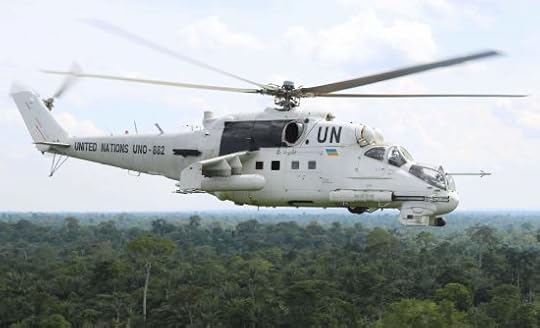
Global peace has been the dream of many. After the devastating events of World War II, the United Nations (UN) was formed, with 51 members at that time, to ensure that there would be no repeat of such epic-scale conflict. The UN has grown to 193 members, including Australia, Belgium, China, Germany, India, Japan, the United Kingdom, and the United States, among many others. These member states generally work toward common goals to keep the peace of the times and to aid each other in times of need.
The Beginning of the United Nations Peacekeeping Forces
Despite the world’s efforts, many conflicts have ignited after WWII. The UN Peacekeeping Force was established due to such conflict in 1948 between Israel and its neighboring Arab nations. The Peacekeeping Forces were tasked to oversee the armistice agreement between the conflicting parties. This operation was dubbed the United Nations Truce Supervision Organization (UNTSO). In the same year, conflict began between India and Pakistan over the regions of Kashmir, which rests on the borders of the two nations.
The UN Security Council sent a party, the UN Commission for India and Pakistan (UNCIP), to investigate this territorial conflict and mediate between the two nations. In 1949, the UNCIP became a part of a larger committee called the UN Military Observer Group in India and Pakistan (UNMOGIP). The UNTSO and UNMOGIP was the beginning of the UN Peacekeeping Forces’ work in bringing global peace through fair investigation and diplomacy.
Peacekeeping in the Air
A former colony of Belgium, Congo became independent on June 30, 1960. But Congo’s separation from Belgium was far from cordial. Conflict broke out when Belgium sent troops to Congo without permission from the Congolese government. The Congolese government called for the UN to assist in bringing order to the country.
In the book Air Power in UN Operations: Wings for Peace, edited by A. Walter Dorn, retired Canadian Air Force lieutenant general William K. Carr writes about the role played by the UN Air Transport Forces (UNATF) in the operation in Congo (Opération des Nations Unies au Congo, or ONUC): “[UNATF] was to operate and control aircraft, air traffic, and the facilities need to support the ONUC commander in the effective execution of his mandate.” They were in charge of goods and UN civilian and military transport, rescue operations, air superiority, and surveillance. The UNATF, which was led by the Royal Canadian Air Force (RCAF), contributed greatly to the success of ONUC.
Before ONUC, the UN also used air operations to assess a rising rebellion in Lebanon. The UN Observer Group (UNOGIL) was tasked to observe whether the allegations of infiltration of the United Arab Republic (UAR) in Lebanon were true. UNOGIL relied on aerial operations to monitor the situation, observe suspicious movement in the borders, and gather intel for the land operation.
In the following years, air power continued to play key roles in UN operations. In 1964, the RCAF supported the UNMOGIP’s mission in India and Pakistan. The RCAF provided excellent support in transporting personnel and goods and training UNMOGIP officers to prepare for operations. In Air Power in UN Operations, A. Walter Dorn highlights the three main functions of air power: “airlift, aerial reconnaissance, and air combat.”
These functions are integral to the UN Peacekeeping Forces’ success in creating the conditions for global peace. The UN’s air power was apparent in the mission in Sarajevo, Bosnia, when they suppressed further attacks in the sector and was also a vehicle for humanitarian assistance. To date, the UN Peacekeeping Forces has completed seventy-one operations since 1948 and currently has fifteen undergoing operations. Behind these operations are the global partners in peace and development—nations and volunteers who work and contribute to achieve their cause.
Is global peace possible? It may not be achieved in the near future; but as long as nations, organizations, and people continue to work for it, the world can gradually become a better place for all its inhabitants.
What are your thoughts on achieving global peace through air power? Share them with me in the comments section below or on Facebook, Twitter, or Goodreads. You can check my blog for more articles or read my book, Ol’ Shakey: Memories of a Flight Engineer, for more aviation stories.
References
Dorn, A. Walter, ed. Air Power in UN Operations: Wings for Peace. New York: Routledge, 2016. Accessed November 8, 2017. http://unairpower.net/contents/.
United Nations. n.d. “History of Peacekeeping.” Accessed November 8, 2017. http://www.un.org/en/peacekeeping/operations/history.shtml.
The post Global Peace through Air Power appeared first on Gene Fish.
February 26, 2018
Mars: Potential Life in Other Celestial Bodies

The universe is made of celestial bodies. By definition, they are natural bodies found outside of the Earth’s atmosphere. The sun, moon, other planets, and stars are only a few of the celestial bodies of the universe.
Very few celestial bodies have been recognized, and there is still a vast expanse of the universe that needs exploring. Identifying the celestial bodies in the solar system is an important part of humanity’s pursuit of discovering what’s out there, what lies beyond what the eyes can see, and whether humans are alone in the universe.
One of the closest celestial bodies to earth is the planet Mars. Mars is smaller than Earth and is more than 141 million miles (227.9 million kilometers, to be exact) from the sun. Unlike the Earth, with different climates and capable of sustaining life, Mars has a temperature of -80 degrees Fahrenheit. It is full of craters, canyons, and volcanoes. It’s a planet full of red dust that can, on a really bad day, turn into large dust storms that can cover the entirety of Mars. There is also lesser gravity on Mars compared to Earth.
Being the closest to Earth and with a lot of similarities, Mars is currently being explored and understood by scientists and astronauts. The National Aeronautics and Space Administration (NASA) has been sending spacecraft to orbit the planet since 1965. These spacecrafts have tools that gather data on the minerals on Mars and are searching for signs of liquid water. Recent data and photograph in Mars have proven that water once flowed on the surface, which means life may have once existed there.
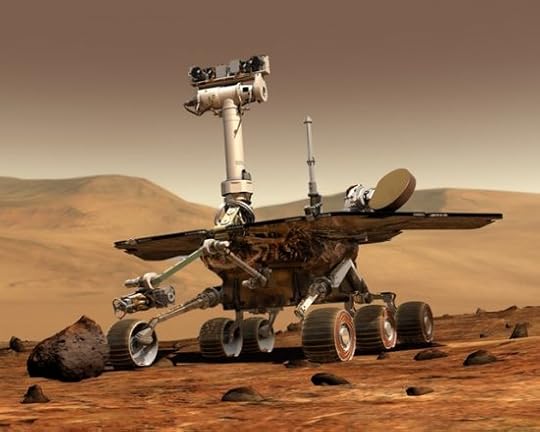
Currently, there are two rovers exploring the surface of Mars, named Opportunity and Curiosity. In 2020, NASA will send another rover to Mars as part of their Mars Exploration Program. This rover will have twenty-three “eyes,” equipped with high-tech cameras and scientific tools. The Mars 2020 rover will further explore the Red Planet and gather sufficient data needed for future goals and plans for the said planet.
NASA is also planning to send astronauts to Mars someday. These astronauts will further investigate whether or not Mars can support life. This mission will open the possibility of colonies in Mars in the future.
The dream is to bring people to space, to find a second home in other celestial bodies. This human endeavor is a manifestation of human’s natural thirst for discovery. After discovering the rest of the world, it’s now time to find out what else is out there, beyond the atmosphere and beyond the stars.
Which part of the universe fascinates you the most? Feel free to share your answers in the comments below and follow me on Twitter, Facebook, and Goodreads. Also check out my book, Ol’ Shakey: Memories of a Flight Engineer, if you’re into aeronautics.
References
Choi, Charles. 2017. “Mars Facts: Water and Robots on the Red Planet.” Space, October 10. Accessed November 1, 2017. https://www.space.com/47-mars-the-red-planet-fourth-planet-from-the-sun.html.
Coffey, Jerry. 2015. “Celestial Body.” Universe Today, December 24. Accessed November 1, 2017. https://www.universetoday.com/48671/celestial-body/.
NASA. “Mars 2020 Mission Overview.” Accessed November 1, 2017. https://mars.nasa.gov/mars2020/mission/overview/.
NASA. “What is Mars?” Accessed November 1, 2017. https://www.nasa.gov/audience/forstudents/k-4/stories/nasa-knows/what-is-mars-k4.html.
The post Mars: Potential Life in Other Celestial Bodies appeared first on Gene Fish.
February 18, 2018
Space Exploration in a Nutshell

Space exploration has been a subject of interest to humans. Because people are intrigued by the unknown, everyone, from scientists to writers, has always wondered about what lies beyond this planet.
Britannica defined space exploration as “the investigation, by means of crewed and uncrewed spacecraft, of the reaches of the universe beyond Earth’s atmosphere and the information so gained to increase knowledge of the cosmos and benefit humanity.”
Thanks to technological breakthroughs, man’s thirst for outer space can now be sated. With the use of machines—and, in some cases, with the aid of animals—humans can now see and further study outer space.
During our modern era, experimental rockets were launched in the 1930s and 1940s, but their results left much to be desired. The launching of the Sputnik 1 satellite by the Soviet Union on October 4, 1957, proved that missions on space were not exactly an impossible feat. The achievement, which has a significant place in the history of space exploration, prompted the Soviet Union to launch the Sputnik 2 satellite in less than a month later.
Wanting to have their own contribution in the space exploration timeline, the United States aimed to eclipse the Soviet Union’s success in space. They successfully launched the Explorer 1 satellite on January 31, 1958—an event that signaled the beginning of the “space race” between the two countries. Explorer 2 followed on March 2 of the same year. However, it failed to match the success of its predecessor.
After successful unmanned missions came the sending of humans into outer space. Russia was the first country to successfully accomplish this by sending Yuri Gagarin aboard the Vostok 1 on April 12, 1961. The ship orbited the Earth in an hour and forty-eight minutes. Not to be outdone, the United States had Alan Shepard achieve a complete suborbital flight a month later. Not all space missions had happy endings, however. All crew members of Apollo 1 perished on January 27, 1967, when their ship caught fire on the ground during a simulation launch.
With the help of technological advancements, manned space mission became safer and easier. On July 20, 1969, the United States was able to cement a solid reputation in space exploration with the successful and safe landing of Apollo 11’s crew on the moon. Neil Armstrong also scored a victory himself by being the first-ever man to walk on the moon.
The future of space exploration remains bright. With the focus shifting from the moon to Mars, possibilities are endless. In the world of space exploration, there’s nowhere to go but up.
What are some of your favorite events in space exploration history? List them down in the comment section below or through Facebook, Twitter, and Goodreads. Don’t forget to check out my book, Ol’ Shakey, as well.
References
Logsdon, John. 1999. “Space exploration.” Encyclopaedia Britannica, May 4. Last modified September 15, 2017. Accessed October 25, 2017. https://www.britannica.com/topic/space-exploration.
Online Star Register. 2009. “The History of Space Exploration.” Accessed October 25, 2017. https://osr.org/blog/astronomy/the-history-of-space-exploration/.
The post Space Exploration in a Nutshell appeared first on Gene Fish.
February 11, 2018
History of Aviation by the Century

Man has always wanted to touch the sky. There is a calling to explore what lies up above. It is this inkling that started aviation. Let us appreciate man’s pursuit of flight with this brief history of aviation.
Four Hundred BC
The history of aviation goes all the way back to 428 BC, where the earliest records of designs for devices that can carry people were conceived. In fifth-century China, kites, which are known to be the first aircraft created by people, were invented. This was later on followed by the invention of the hot air balloon and rotor wings.
Eighteenth Century
In the eighteenth century, modern aviation started. There were two types of aviation back then: lighter-than-air and heavier-than-air. Lighter-than-air aviation paved the way for modern hot air balloons and zeppelins, it is basically flight using hydrogen, helium and other gasses. Heavier-than-air aviation, on the other hand, paved the way for airplanes and other aircrafts.
Twentieth Century
The history of aviation took a rapid turn when siblings Orville and Wilbur Wright flew their flying machine on December 17, 1903. The flight lasted just a second shy of a minute, flea a distance of 852 feet. It was this flight that skyrocketed aviation. Thanks to the Wright brothers, it was known that a comprehensive understanding of the dynamics of wings, reputable engines, and flight control is required to keep an aircraft afloat.
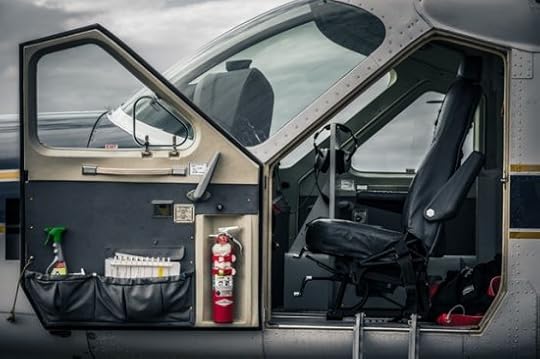
In the years that followed, several aircrafts were designed and produced, including the first passenger service in January 1914. This operation introduced cross-continent transportation, conceiving the initial idea for airplanes. By this time in history, commercial aviation was instigated.
When the war broke, military aircrafts were already fully functioning, aiding troops in the battle. The US Army Air Force Transport Command (ATC) was a major contributor to the further development of aviation. During the war, the ATC were able to fly across the Himalayas to bring supplies to their allies. They were also able to set up airfields and create a network complete with communication centers and weather-forecasting facilities, an endeavor that was soon adapted for intercontinental transportation.

After WWII, several cities all over the world have established their own airports. The advancement was a result of the flight success of several military aircrafts, leading the way for airlines and personal planes. Flight was also regulated by ensuring safety and efficiency. Not long after the Convention on International Civil Aviation began to standardize flight, many economical airliners began their operations in different countries
Twenty-First Century
Fast-forward to today, aircrafts are significantly more advanced. With the advent of information technology, aircrafts have been digitized and the aviation industry has taken full flight. Beginning in the 1970s, computers have been of great help in developing better designs and in discovering alternative and more reliable materials for aircrafts.
The timeline of aviation history is propelled by an endless desire to go around the world the fastest way possible. Flight is not going to land any time soon because developments are under way, working to have safer, faster, and more comfortable flights in the future.
As a Flight engineer during the Vietnam war, I have personally seen the utility of aircrafts. Read more about my journey in my book, Ol’ Shakey: Memories of a Flight Engineer. What’s the best thing about the aviation industry? Share your thoughts in the comments section below or tweet them @GeneFishAuthor. Also follow my Facebook page for more updates.
References
HistoryNet. “A Brief History of Aviation by JustFly.” Accessed October 25, 2017. http://www.historynet.com/a-brief-history-of-aviation-by-justfly.htm.
Bilstein, Roger E., Tom D. Crouch, and Walter James Boyne. “History of Flight.” Encyclopedia Britannica. Accessed October 25, 2017. https://www.britannica.com/technology/history-of-flight.
The post History of Aviation by the Century appeared first on Gene Fish.
July 6, 2017
Becoming Part of the United States Armed Forces

High school graduation! Just another milestone like so many others! Sixteen and a driver’s license. The Junior Prom with all its pageantry and—sometimes—high drama. Her first true love, and she is finally going steady! His first car, probably a jalopy that needs a lot of work—but he OWNS it, paid for from his paper route. Then suddenly they find themselves seniors! Arrived at last.
Milestones have fled past so rapidly that these future world leaders have trouble fitting into their new role as school leaders. The class government. The year book committee. To whom will their memento be dedicated? Will it be the beloved English teacher who through the years pushed her students to greater respect for classical literature? Or perhaps the football coach who tried to turn out championship teams—but just never had the right players? Maybe the chemistry teacher who got so excited when his experiment demonstrations worked just as he had described them? Then suddenly the Senior Prom with all its splendor is upon them.
Watching them walk rapidly from class to class, showing their acceptance to the challenge to adulthood makes you proud.
Then graduation ceremony is over! Hats thrown high into the air! They are no longer students. They are young adults with their future ahead of them. What now? Will their path take them into college to study for the law, medicine, business? Some have long ago made their decision. College for some. Technical school for others. Entry level jobs for some. Still others have set their sights higher—much higher!
Some of these young men and women will turn in to their local Army, Navy, Marine Corps, or Air Force recruiter. They will discuss what is required; they will ask questions and the recruiter will try to answer honestly. They will walk away and talk with their parents of the possibility of joining some branch of the armed forces. Parents will meet with the recruiter, either in his office or in their home. More questions and answers will follow. If the answers satisfy, the recruiter will present the young person with a contract. This is the first step in the long process of becoming a member of the United States Armed Forces.
Then off to the induction center where a very thorough physical examination is conducted—much more in depth than anything they had experienced before. But the doctor finally pronounces the applicant physically and mentally fit for service. The recruits are then guided into ranks, the lines are straightened, and an officer marches to a position in front of the formation. He looks left, then right. He lets his gaze fall on every one of those young people standing in front of him, then he speaks.
“Raise your right hand and repeat after me. Say I, state your name, do solemnly swear (or affirm) that I will support and defend the Constitution of the United States against all enemies, foreign and domestic; that I will bear true faith and allegiance to the same; and that I will obey the orders of the President of the United States and the orders of the officers appointed over me, according to regulations and the Uniform Code of Military Justice. So help me God.”
A new adventure has begun. One that will overshadow everything that went before. One that will make the individual a member of the best Army, Navy, Marine Corps, or Air Force in the world. This is a profession every one of them can take pride in. This is a profession without bounds, except those the individual places in his or her own way!
Rev. Dr. Gene Fish
The post Becoming Part of the United States Armed Forces appeared first on Gene Fish.
March 27, 2017
Air Force: High-Flying Fun
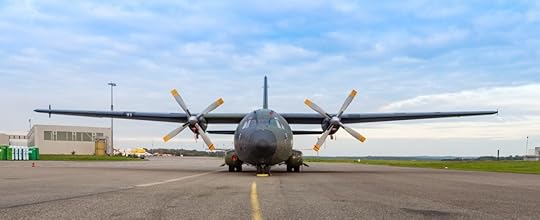
Joining the United States military is not an easy decision to make. There is a possibility that you have to leave your family and loved ones when you are deployed, and the situations you can get into when you are engaged in a conflict can be life-threatening. However, there is a positive aspect to this sort of life, and that is the camaraderie that can form and the friendships that can last, especially in the Air Force.
Of course, not everyone would agree. Some would even go as far as to say the old-timers wore rose-tinted glasses when describing their Air Force experiences, but that is not all true; and of course, it is not always the case because you really can’t please everyone. Stateside, a lot of other servicemen would obviously not spend their spare time with their comrades. With at least ten hours a day training and working with the same people, it is a pleasure to be away and spend their free time with their personal friends and loved ones as they are just living nearby.
But things are different when you are deployed. You find it hard to adjust in a different country with a different culture, so you cling to your crew, which makes for a very fine adventure indeed. The good places to find the good old-school camaraderie are usually in far-off lands like in South Korea. And if you think being in a foreign country can bring you closer to your mates, imagine being in a cabin up in the sky where all of you have to depend on each other.
The technology now is far advanced than the ones servicemen had back then; so when I say you had to rely on each other, it meant trusting your coworker with your life. And if that won’t make a friend out of a coworker, then nothing else will.
Like any work environment, cabin fever usually sets in at a certain point. Resentment begins to form, but it’s not all bad because once you get past that, you are assured of having good friends for life. Many former servicemen tell tales of brotherhood from their experiences, but the youth of today joining complain about not having the same. Maybe it’s because they don’t have to form the same kind of trust servicemen in the past needed to make with each other, or maybe it’s because these young pups haven’t had enough time and opportunity to build these lasting bonds with the people around them.
This is a challenge that a crew member in the Air Force has to overcome because without the support and friendship of these people, then it takes out all the wind in flying, and that’s no fun at all. So if you are thinking of joining the Air Force, think about it first and how you are as a person because if it is the job for you, you’re in for a fantastic high-flying adventure!
The post Air Force: High-Flying Fun appeared first on Gene Fish.



